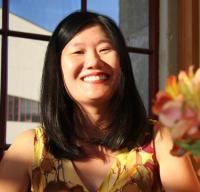Wong: Environmental Legacy
of the UC NATURAL RESERVE SYSTEM
Peggy L. Fiedler, Susan G. Rumsey, Kathleen M. Wong (NASW member), eds.
University of California Press, February 2013, $39.95
ISBN: 9780520272002
Contact info:
- Kathleen M. Wong, 510-987-0142, cell: 650-291-7352, katwong@nasw.org, kathleen.wong@ucop.edu
- Website
- Publicist: Lorraine Weston, 510-643-0682, lweston@ucpress.edu
- Book webpage
In 1948, Ken Norris, then a UCLA grad student, set out to study desert iguanas in the sand dunes outside Palm Springs. After spending weeks getting to know the heat-tolerant community of reptiles, he returned one day to discover the site had been bulldozed to build a motel.
Instead of simply finding a new place to work, Norris set out to ensure that others would not suffer the same fate. Along with other conservation-minded University of California faculty, Norris devised a way to save representative examples of many of the California’s major ecosystems for research and teaching.
In 1965, they founded the University of California Natural Reserve System (NRS) with seven modest natural sites. Today, the NRS is the world’s largest university-administered reserve system, consisting of more than 750,000 wildland acres, with 38 reserves. Its library of ecosystems includes deserts and wetlands, marine shorelines and vernal pools, oak savannas and alpine forests.
This book tells the story of the NRS and its mandate to provide outdoor classrooms, protect research sites, and conserve ecosystems for the people of California.
Newly hired as the science writer for the NRS, I was handed the book to edit after the contract was finalized. Much of my job involved winnowing information from reports, brochures, articles, and other documents, and smoothing them into a manuscript with a single voice. I also reorganized the book from its original structure.
The biggest hurdle I faced was having the book deadline rolled back from its original publication date. Instead of having a year and a half to put together a final draft, I had six months. It was also strange writing about the natural history of dozens of places I had never visited. In the end, I feel the book offers an entertaining and thorough description of the NRS, a network of field stations and protected natural areas that remains unparalleled anywhere in the world.
———————————
Deadline for August 2013 book blog: July 24, 2013
To submit your book announcement, follow the above format. Include your name, phone number, and email address, plus contact information for your publicist and agent. Send a jpg photo of yourself and of your book jacket (up to 600 by 600 pixels).
Write 250-350 words to summarize your book’s contents. Tell how you developed your idea, researched the book, and wrote it. Include a little about the book’s route to publication. No press releases, please.
Send info to Lynne Lamberg, NASW book editor, llamberg@nasw.org.





